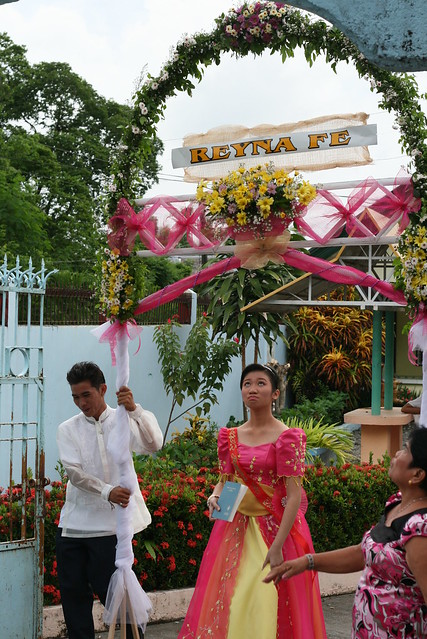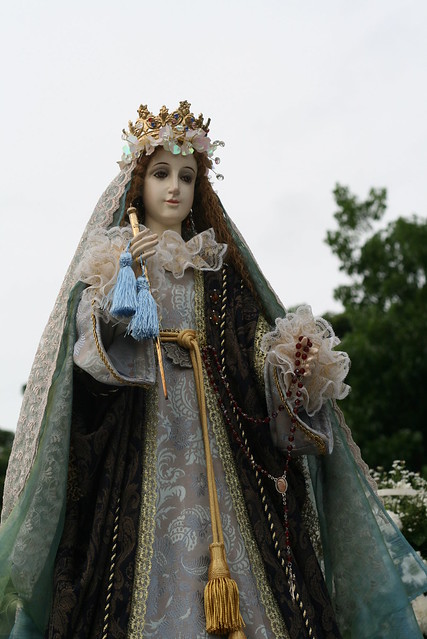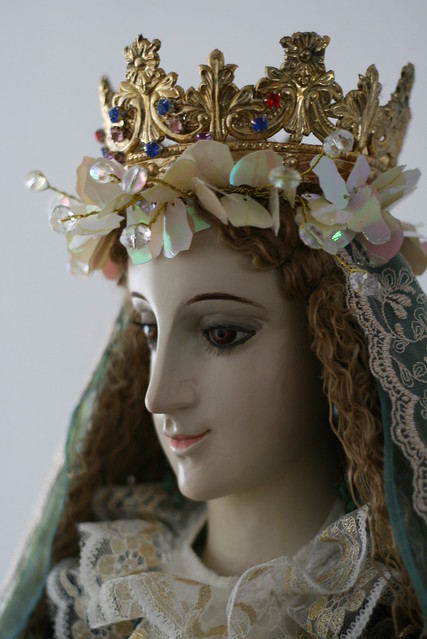
In the Philippines, the month of May is always associated with three things: the start of the rainy season, the month of fiesta celebrations, and the devotion to the Holy Cross and the Flores de Mayo.
Superstition has it that it always rains on May 1st which is celebrated as the feast of Saint Joseph the Worker coinciding with the secular holiday: National Labor Day. They used to call the first showers 'Primera Lluvia de Mayo' [the First rain of May]. People would save the rainwater from that day and have it blessed to be used as holy water, believed to have healing properties.
Then come May 3rd, the feast of the Holy Cross commemorates the finding of the true cross by the Empress Helena, mother of Constantine the Great. From hence, all over the country, for the remainder of the month, chapels and churches would be filled with the sound of prayers and hymns to the Blessed Virgin Mary as children offer her flowers every late afternoon in a ritual they call Flores de Mayo. While in some communities, a wooden cross is moved from house to house by little girls or young ladies until it reaches the house of the one chosen to be the Reyna Elena for the Santa Cruzan or Sagala, the annual promenade of little girls and young ladies dressed in the finest gowns paraded with arches decorated with flowers in commemoration of the Pilgrimage to find the true cross.

Actually, the Santa Cruzan and the Flores de Mayo are two different things: The Flores de Mayo is an act of devotion to the Blessed Virgin Mary culminating with a procession at the end of the month; while the Santa Cruzan started out as a pageant of sorts to showcase the eligible young women as they represent characters in the christian legend. But somehow, in the last thirty years, the two have merged into one unique hodgepodge of an event. The titles of the Virgin Mary like Rosa Mystica [Mystic Rose] or Reyna de las Estrellas [Queen of the Stars] is mixed with Characters like Reyna Banderada [the Motherland], Infanta Judith [the biblical Judith with a severed head], Reyna Elena [Empress Helena] and in some towns, Cleopatra -which i have seen reclining on a palanquin.
Celebrated Cultural writer Gilda Cordero Fernando could not contain her amusement when once shown photographs and regaled with the often incongruous line-ups of the Santa Cruzan or Sagalas of late. But she is forgiving in saying, "Hayaan mo na, it's sooo Folk eh." [Leave it be, It's so Folk].

Folk indeed, as I myself often could not make heads or tails of it yet find it uniquely Filipino. Some people find the Santa Cruzan irrelevant nowadays; a remnant of bygone era that has been consumed by displays of vanity and fundraising activities. But in some towns, they still cling to it, as tool of faith and the retelling of one dramatic chapter in the story of Christianity -and that to me, is better than showbiz celebrities paraded about town upstaging the Blessed Mother and the lessons of early Christian legend. Here's to that, and to the Blessed Virgin Mary.
thus spake the Barefoot Baklesa
















1 comment:
my i link your blog to my group blog "YOCASOCI"( the group of young catholic which in charge in Flowers offering in our beloved Mother Mary and Grand Procession every last sunday of May) thanks .. God bless you.
Post a Comment